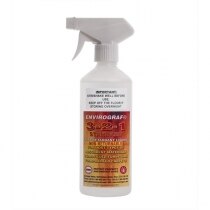-
Contact
Sales & Customer Service
0800 612 6537 support@safelincs.co.uk Live ChatDelivery Enquiries
0800 077 6149 - Resources
Fire & Safety Solutions
CALL OUR TEAM NOW 0800 612 6537
Lines open today 8am - 6pm
Free Delivery
on 100s of Products
Secure Payments
with our fast checkout
Live Customer Chat
Available Now
30 Day Accounts
for Public Sector
5 Star Customer Feedback
PFP for Bedding and Curtains
Since March 1989, there has been a requirement for foam and other fillings in new beds to resist ignition in the way and to the degree specified in The Furniture and Furnishings (Fire Safety) Regulations 1988. Since March 1993, that same legal requirement, in relation to fillings, has also applied to second-hand beds supplied to consumers in the course of business.
The relevant British Standard covering the area of ignition resistance for mattresses, mattress pads, divans and bed bases is BS 7177:2008+A1:2011.
BS 7177 defines a mattress pad (topper) as a product which comprises a cover and filling, or filling materials alone, designed to be used in conjunction with a mattress or upholstered bed base. Therefore mattress pads are considered to be the same as mattresses in the eyes of the British standard, as they are not intended to be used separately.
As a result, the filling material (foam or non-foam) contained in a mattress pad must meet the regulations. In addition the fire safety of the complete product is controlled via the General Product Safety Regulations 2005 hence the mattress pad must also comply with the low hazard category of BS 7177.
The Regulations do not apply to sleeping bags, bedclothes (including duvets), loose covers for mattresses (i.e. mattress protectors), pillow cases, curtains or carpets. However, it is important to note that these products are covered under General Product Safety Regulations 2005, under which, it is an offence to supply products that are unsafe:
"No producer shall place a product on the market unless the product is a safe product".
This is known as the "general safety requirement". The same regulations apply to upholstered furniture and beds supplied with new caravans. Whilst BS 7177's scope does not extend to motor homes and camper vans, the supply of these vehicles is of course still covered by the General Product Safety Regulations 2005.
BS 5867-2:2008 defines the specification for flammability requirements in relation to curtains. When purchasing fire retardant curtains it is important to understand their characteristics. When a fabric is designated as inherently fire-retardant, permanently fire-retardant or durably fire-retardant, the flame resistance will last for the life of the fabric as it has been woven into the fabric fibre itself. This means it can be laundered or dry-cleaned in line with the manufacturer's recommendations.
In the case of fabrics that are designated as fire-retardant that have been treated with chemicals, the flame resistance of the fabric will dissipate over time, particularly with repeated cleaning. If you wash fabric marked flame- or fire-retardant, you will need to re-treat the fabric after washing to restore the fireproofing. It might be possible to avoid re-treating by dry-cleaning them using a non-liquid agent.
Envirograf 321 Fire Retardant Spray
Envirograf 123 Fire Retardant spray is designed to impregnate materials to increase fire resistance.
Available in two versions, 123 spray is capable of a wide range of items and is non-hazardous.

Envirograf 321 Fire Retardant Spray
- Provides flame-retardant protection for a wide range of materials
- Excellent longevity
- Suitable for Soft furnishings, Mattresses and Christmas trees
Reviewed: 06/05/2020 (doc:111 V1.0). Our articles are reviewed regularly. However, any changes made to standards or legislation following the review date will not have been considered. Please note that we provide abridged, easy-to-understand guidance. To make detailed decisions about your fire safety provisions, you might require further advice or need to consult the full standards and legislation.



























